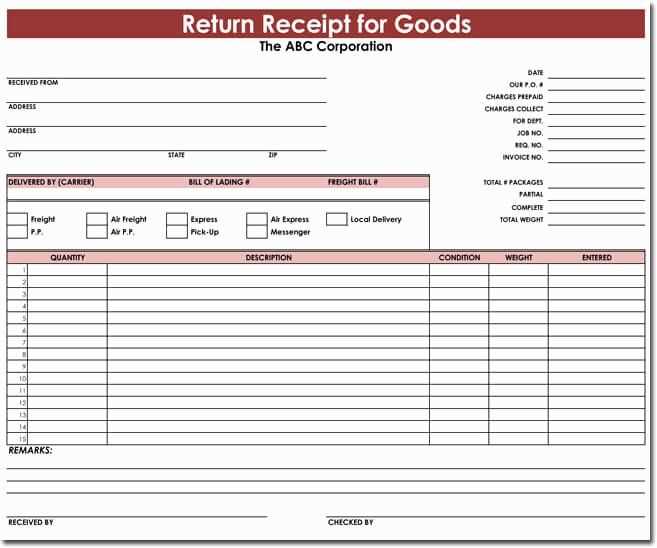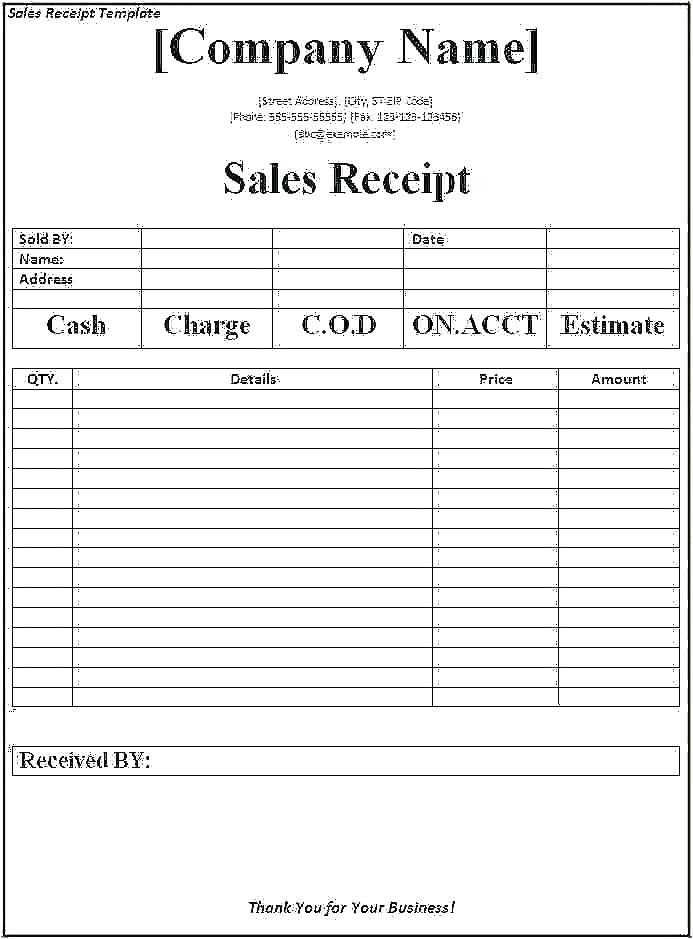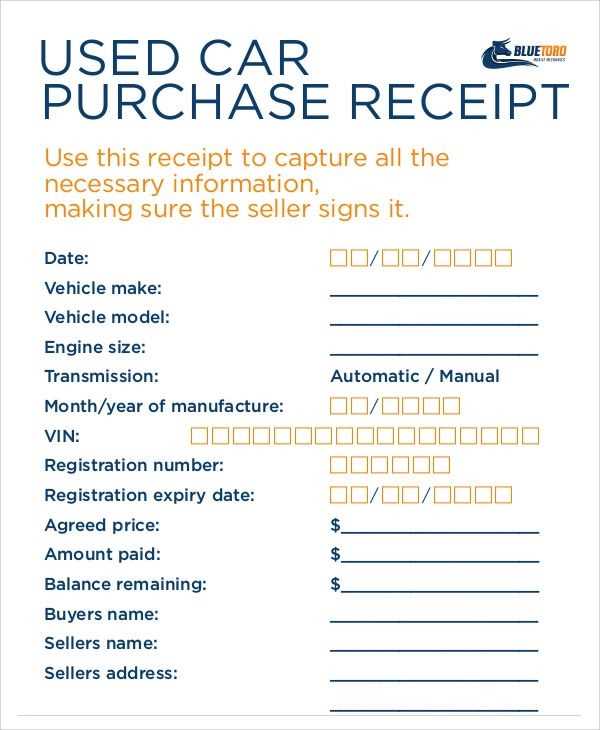
For a private car purchase, a receipt serves as an official confirmation of the transaction. Make sure to include all the key details such as the buyer’s and seller’s information, the vehicle’s specifics, and the agreed-upon payment amount. A well-structured receipt provides clarity and helps protect both parties in case of future disputes.
Use the template to record the date of sale, vehicle make and model, and VIN number. This ensures that the car is properly identified and the transaction is transparent. Make sure to also note the total amount paid and any payment methods used, whether it’s cash, check, or bank transfer.
Additionally, it’s a good idea to include a statement confirming that the car is sold “as-is,” unless otherwise agreed upon. Both parties should sign the receipt, which solidifies the transaction and ensures accountability. Having a proper receipt can save time and confusion if any questions arise after the sale.
Receipt Template for Private Car Purchase
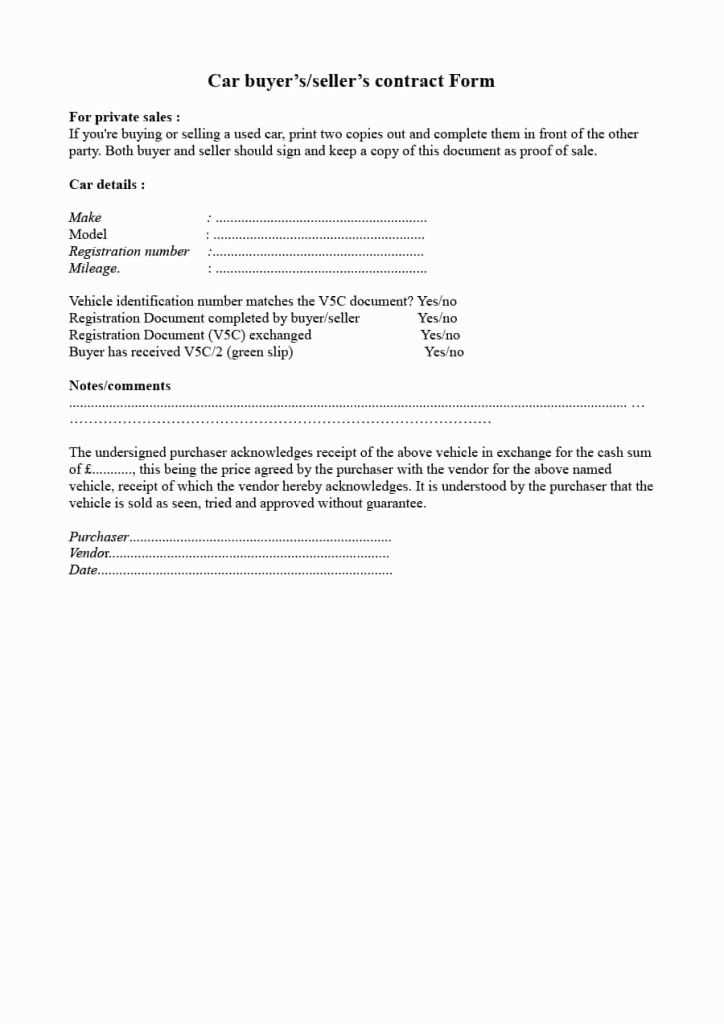
Ensure your private car purchase is documented clearly with the following receipt template. This will help both parties have a clear record of the transaction, including important details like payment terms, vehicle condition, and transfer of ownership.
Receipt Template
Buyer’s Name: [Insert buyer’s full name]
Seller’s Name: [Insert seller’s full name]
Date of Transaction: [Insert date of purchase]
Vehicle Information:
- Make: [Insert vehicle make]
- Model: [Insert vehicle model]
- Year: [Insert vehicle year]
- VIN: [Insert Vehicle Identification Number]
- Odometer Reading: [Insert mileage]
- Color: [Insert color]
Purchase Price: [Insert agreed price]
Payment Method: [Insert payment method, e.g., Cash, Bank Transfer, etc.]
Payment Details: The full amount of [Insert amount] has been paid in full to the seller by the buyer.
Seller’s Acknowledgment: I, the seller, confirm that the vehicle described above has been sold to the buyer for the amount stated, and I have received the full payment. The vehicle is sold as-is, with no warranties or guarantees, unless otherwise specified in a separate agreement.
Buyer’s Acknowledgment: I, the buyer, acknowledge receipt of the vehicle described above in the condition stated and confirm the payment made to the seller.
Signatures:
_____________________________ (Buyer’s Signature)
_____________________________ (Seller’s Signature)
Witness (if applicable): ___________________________ (Witness’s Signature)
How to Structure the Receipt for a Private Car Sale
Ensure the receipt includes all critical details to protect both buyer and seller. A well-structured document prevents disputes and provides legal clarity.
- Title: Clearly label the document as “Bill of Sale” or “Car Sale Receipt.”
- Date of Sale: Record the exact date of the transaction.
- Buyer and Seller Details: Include full names, addresses, and contact information.
- Vehicle Information: List the make, model, year, VIN (Vehicle Identification Number), mileage, and license plate number.
- Sale Price: Clearly state the amount paid and the payment method used.
- Condition Disclosure: Specify whether the vehicle is sold “as-is” or with any warranties.
- Odometer Reading: Record the mileage at the time of sale, as required by law in many regions.
- Signatures: Both parties should sign and date the receipt to confirm the agreement.
Provide two copies–one for the buyer and one for the seller. If possible, have the receipt notarized for added security.
Including Legal and Payment Terms in the Receipt
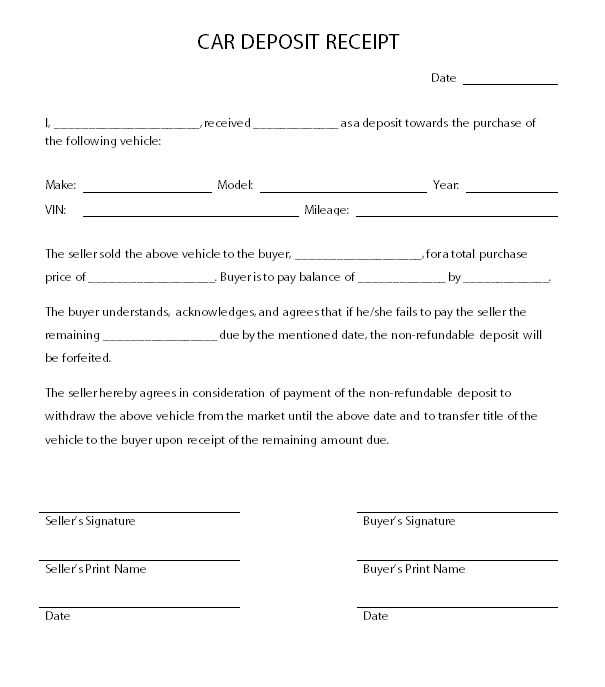
Specify the full names and addresses of both the buyer and seller to ensure clarity in case of disputes. Include the vehicle’s make, model, year, VIN, and mileage to establish an accurate record of the transaction.
State the total purchase price in both numeric and written form. If a deposit was made, document the amount, date, and payment method. Indicate whether the remaining balance was paid in full or if a payment schedule applies. Specify acceptable payment methods, such as cash, bank transfer, or check.
Include an “as-is” clause unless the vehicle is sold with a warranty. If applicable, outline any guarantees and their duration. Mention any obligations, such as emissions testing or title transfer deadlines. If a lien exists, confirm its resolution before finalizing the sale.
Both parties must sign and date the receipt. If local laws require a witness or notary, ensure compliance. Provide copies to both buyer and seller for reference.
Additional Information to Include for Record-Keeping
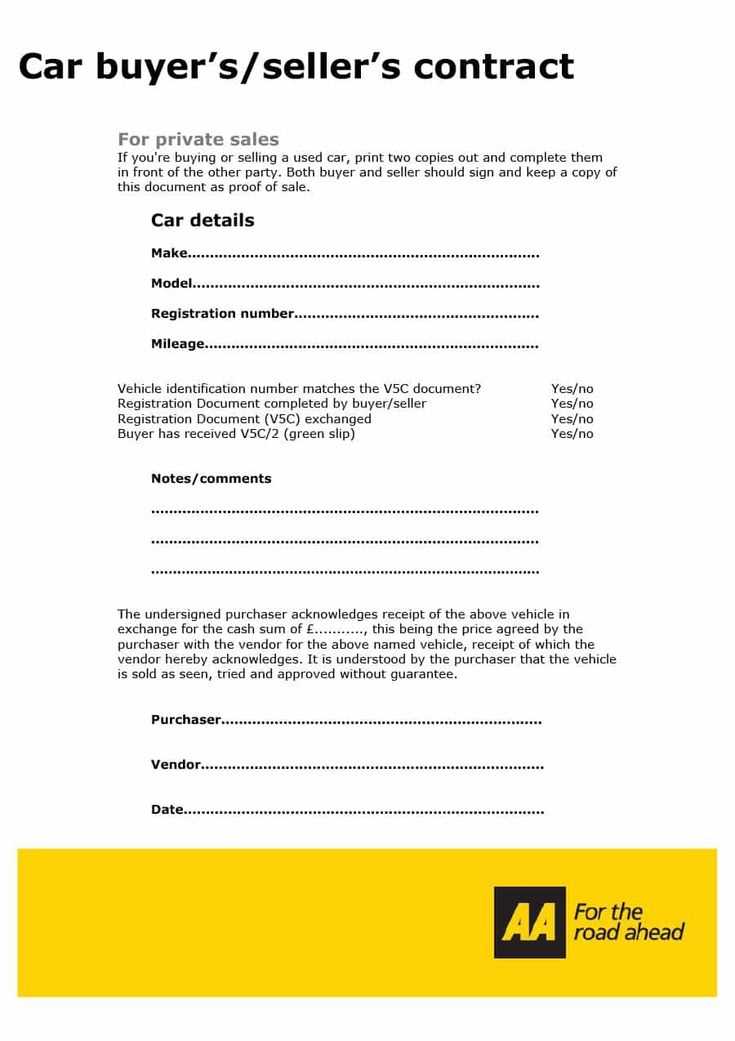
Include a copy of the buyer’s and seller’s identification, such as a driver’s license or passport. This ensures both parties can verify the transaction if needed.
Record the odometer reading at the time of sale. Many jurisdictions require this information to prevent fraud and ensure accurate mileage tracking.
Specify any warranties or “as-is” conditions. If the car is sold without guarantees, clearly state this to avoid future disputes.
List all included accessories, such as extra keys, spare tires, or aftermarket modifications. This prevents misunderstandings about what was part of the sale.
Include the payment method and any receipt numbers if applicable. Whether it’s cash, bank transfer, or check, having a record helps in case of payment disputes.
Note any outstanding loans or liens on the vehicle. If the car has an active loan, specify how and when it will be cleared to avoid legal issues.
Sign and date the document with both parties present. If possible, have a witness or notary acknowledge the transaction for added security.
